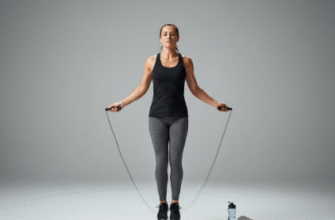Ever feel like you’re spinning your wheels? Whether you’re trying to learn a new skill, get a project off the ground, or make changes in your personal habits, it’s incredibly easy to lose sight of how far you’ve actually come. We get bogged down in the day-to-day grind, focusing on the mountain still left to climb rather than the path already traveled. This is where a surprisingly simple, yet powerful tool comes into play: the progress photo.
It sounds almost trivial, doesn’t it? Taking a picture. But think about it. Our memories are notoriously unreliable filters. We often remember the struggles more vividly than the small victories. We compare our current state not to where we started, but to some idealized endpoint, leading to frustration and a sense of stagnation. Progress photos cut through that mental fog. They offer cold, hard, visual evidence of change, bypassing the fickle nature of memory and self-perception.
Why Visual Evidence Trumps Vague Feelings
Our brains are wired to process visual information incredibly efficiently. Seeing is, quite literally, believing for many aspects of our understanding. When you look back at a photo from weeks or months ago and compare it to one taken today, the difference can be stark, even if you didn’t *feel* like much had changed along the way.
Consider learning to draw. Your early sketches might look wobbly, disproportionate. Day by day, practicing feels like tiny, almost imperceptible steps. You might still feel like a complete novice weeks later. But comparing a sketch from week one to a sketch from week eight? Suddenly, the improvements in line quality, shading, and proportion become undeniable. That visual proof provides a jolt of validation. It says, “Hey, look! This effort *is* making a difference.” This validation is pure motivational fuel.
The Slow Creep of Incremental Change
Progress rarely happens in dramatic leaps. It’s usually a slow, incremental creep. Imagine watching grass grow – you don’t see it happening moment by moment. But look away for a week, and the change is obvious. Progress photos capture this slow creep. They freeze moments in time, allowing you to stack them up and see the cumulative effect of your consistent effort.
This is crucial because the lack of immediate, dramatic results is a primary reason people abandon new pursuits. We live in a world craving instant gratification. When learning an instrument doesn’t sound like a masterpiece after a month, or decluttering one drawer doesn’t magically transform the whole house, discouragement sets in. Progress photos act as a buffer against this impatience. They remind you that change *is* happening, just perhaps not at the speed your impatient brain desires.
Making Progress Photos Work For You
Simply snapping random pictures isn’t enough. To truly harness their motivational power, a little strategy goes a long way. Consistency and context are key.
Consistency is King
Decide on a regular interval for taking your photos. Weekly? Bi-weekly? Monthly? The ideal frequency depends on what you’re tracking. For faster-changing pursuits (like tidying a specific messy area), weekly might be good. For slower burns (like mastering a complex skill or growing a long-term garden), monthly might suffice. The important thing is to stick to the schedule.
Try to keep the conditions similar each time you take a photo. If you’re tracking a physical change or project:
- Use the same location.
- Maintain similar lighting conditions (e.g., same time of day, same light source).
- Keep the angle and distance consistent.
- If tracking personal appearance changes, wear similar clothing or the same outfit.
This consistency minimizes variables, making the actual progress the most prominent difference between photos. It allows for a more accurate apples-to-apples comparison.
Context Matters: Beyond Just the Visual
While the photo itself is powerful, adding a little context can amplify its effect. Consider keeping a brief log alongside your photos. Jot down:
- The date the photo was taken.
- A brief note about how you were feeling or what you were working on at that time.
- Any specific challenges or breakthroughs you experienced around that period.
Looking back, this combination of visual evidence and contextual notes creates a richer narrative of your journey. You don’t just see the change; you remember the effort, the feelings, and the specific steps that led to it. This deeper understanding reinforces the connection between your actions and the results.
Be Mindful of Pitfalls. While progress photos are motivating, avoid falling into the comparison trap, either with others or unrealistic versions of yourself. Focus purely on *your* journey from your starting point. Also, ensure this practice remains a source of encouragement, not obsession or anxiety. If it starts feeling negative, take a break or reassess your approach.
Seeing the Unseen: Applying Progress Photos Broadly
The beauty of this technique is its versatility. It’s not just for tracking physical transformations. Think creatively!
Creative & Skill-Based Pursuits
- Art/Crafts: Photograph your drawings, paintings, knitting projects, pottery, etc., at various stages or milestones.
- Writing: Okay, maybe not a photo *of* the text, but track word counts, chapter completions, or even take screenshots of your project outline evolving over time.
- Music: Record short clips of yourself playing the same piece at regular intervals. The audio serves the same purpose as a visual photo.
- Gardening: Document your plants growing, your garden layout changing, or the progression from seed to harvest.
Home & Organization Projects
- Decluttering/Organizing: Take “before” photos of a messy drawer, closet, or room, and then “after” photos once it’s tackled. Seeing the transformation is incredibly satisfying.
- DIY/Renovations: Document each stage of a home improvement project. It helps appreciate the effort when you see the starting point again.
- Cleaning Routines: If establishing a new cleaning habit, a quick snap of a consistently clean sink or tidy desk can reinforce the positive routine.
Overcoming the “Cringe Factor”
Let’s be honest: looking at “before” photos can sometimes feel embarrassing or uncomfortable, especially if they represent a state you weren’t happy with. It’s tempting to delete them or avoid looking back. Resist that urge!
Reframe that initial discomfort. That “before” photo isn’t a mark of shame; it’s your starting line. It represents the courage it took to begin making a change. Without that starting point, the progress you see later has no context. Celebrate the fact that you are no longer at square one. The distance traveled is something to be proud of, and the initial photo is essential proof of that distance.
Think of it like a map showing where your journey began. You wouldn’t tear off the starting point of the map, would you? It’s integral to understanding the whole trip. Embrace the entire timeline – the beginning, the middle, and the ongoing process. Each photo is a chapter in your story of effort and change.
Ultimately, progress photos are a simple, accessible, and highly effective way to hack your own motivation. They provide objective feedback, combat faulty memory, highlight incremental gains, and offer tangible proof that your efforts are worthwhile. So, pick an area where you’re seeking change, grab your camera or phone, and start documenting. You might be surprised just how motivating seeing your own progress can be.








